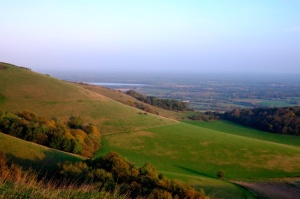 I think that we can afford to raise one cheer for our MPs for decisions they have taken on the future of the fracking industry. In their final Commons debate on the latest Infrastructure Bill the Government made concessions that give effect to significant points for which CPRE has campaigned both nationally and locally here in Sussex.
I think that we can afford to raise one cheer for our MPs for decisions they have taken on the future of the fracking industry. In their final Commons debate on the latest Infrastructure Bill the Government made concessions that give effect to significant points for which CPRE has campaigned both nationally and locally here in Sussex.
New planning rules mean that there should be no unconventional drilling (fracking) for shale oil or gas in “protected areas” i.e. the South Downs or other National Parks, Areas of Outstanding Natural Beauty, SSSIs, Special Areas of Conservation and Special Protection Areas or in other areas near to groundwater sources. CPRE played an active role in assisting the successful proposers of this amendment to the Infrastructure Bill.
The Government has also agreed to impose a number of other significant preconditions before fracking can be allowed to take place. These include environmental impact assessments in all cases, extended site monitoring, and an obligation on planning authorities to consider the cumulative impact of fracking in the area. Planning authorities also get greater powers to impose well decommissioning conditions.
Hooray on these counts. However, before we cheer too loudly, let us all understand that these concessions will NOT mean the end of exploration for hydrocarbons beneath the South Downs or the Weald. All exploratory drilling to date in Sussex has involved conventional, somewhat less controversial, drilling techniques, not fracking. The new restrictions and requirements do not apply to, and will not put a stop to, conventional drilling for oil and gas within specially designated areas. Nor will the new rules make conventional drilling any safer or better regulated.
That is one reason why we cannot give three cheers to our politicians, and why CPRE will remain vigilant in its campaign to protect the Sussex countryside.
The second reason for only offering muted cheers is the heavy defeat of a Commons motion to impose a moratorium on fracking while an independent assessment is carried out into the impact of unconventional petroleum on climate change, the environment, health and safety and the economy. This, despite the moratorium being called for by the environmental audit committee of MPs in a pretty robust report published this week. Instead, the Prime Minister has said that the Government will continue to “go all out” for shale gas in the UK.
How short sighted! Despite the current Government’s unwavering belief in hydrocarbons extracted from shale as some kind of magic solution to our energy needs, the fact is that the UK is committed to decarbonising its electricity supplies within the next 15 years. Shale gas/oil is not there on tap to pour into our homes and businesses. We don’t even know what economically recoverable reserves exist, or where. Acceptable space for mass exploitation of the resource, wherever reserves are found, simply doesn’t exist. Public trust in the regulation and planning system is non-existent. And right now, the drop in oil prices plays havoc with the economics of investment in large scale speculative oil exploration.
For all these reasons, even putting aside the environmental and health issues, it seems unlikely that we will see large-volume recovery of shale oil or gas for quite a few years. And that timeframe is simply incompatible with making hydrocarbons from shale a key resource ahead of our climate change commitment to source our energy needs entirely from non carbon-producing sources by 2030. Surely the Environmental Audit Committee of MPs was right to say that, in these circumstances, we should take time to understand better what the environmental impact of the new technology would be. Or are we not so committed to carbon reduction and renewables after all?
Michael Brown, CPRE Sussex
Image © David Holt





